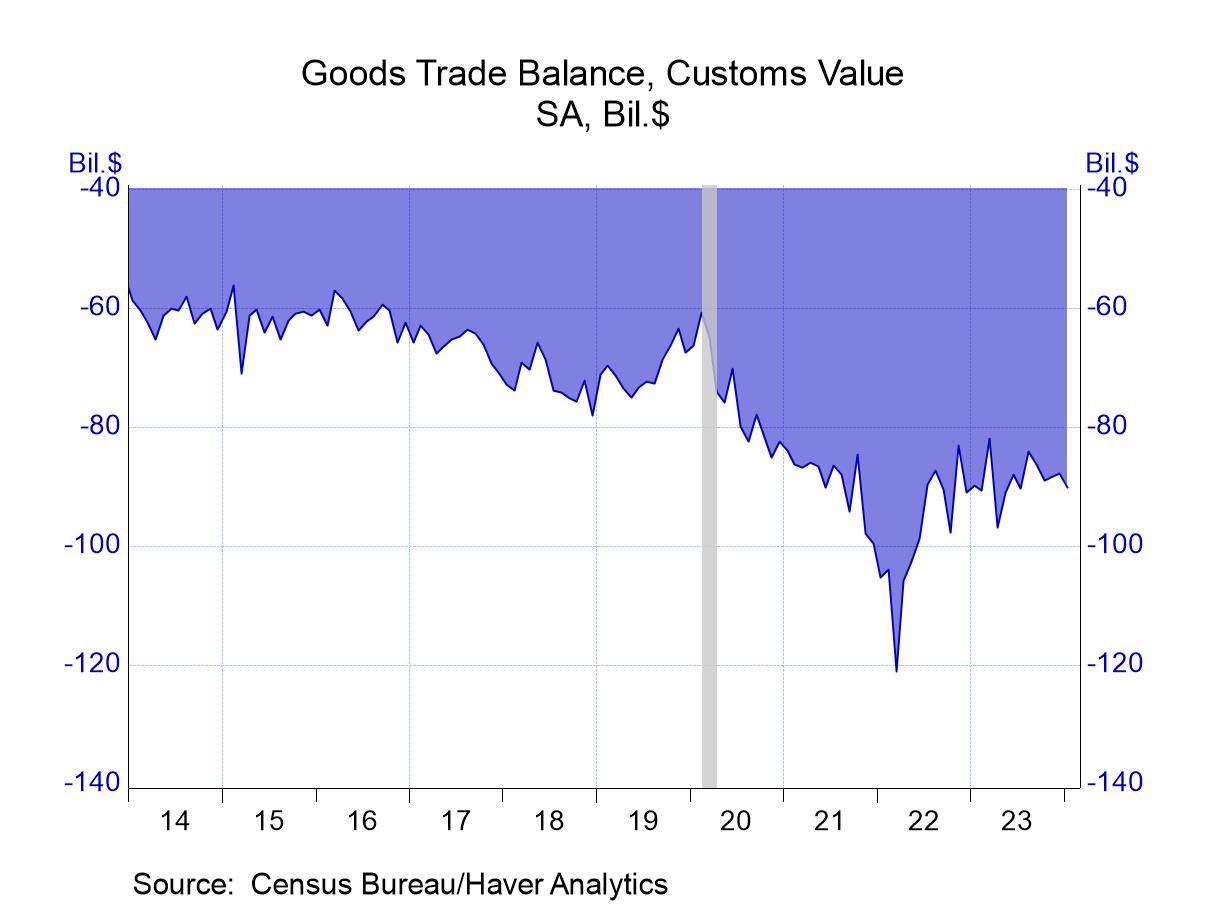- Nominal spending improves but eases in real terms.
- Disposable income moves up steadily.
- PCE price index strengthens.
by:Tom Moeller
|in:Economy in Brief
- USA| Feb 29 2024
U.S. Pending Home Sales Fall Sharply in January
- Decline reverses December increase.
- Falloff is centered in Midwest & South.
by:Tom Moeller
|in:Economy in Brief
- USA| Feb 29 2024
Chicago Business Barometer Falls Again in February
- The headline index fell to 44.0, pointing to on-going decline in activity.
- The employment and production subindexes declined 6.0 points.
- Input prices continued to rise at a slow pace.
- The index has not been positive since September 2022
- However, the negative reading for February was smaller than in January.
- Shipments and employment picked up, but orders and production were lackluster.
by:Sandy Batten
|in:Economy in Brief
- Initial claims up 13,000; maintain tight range
- Continuing claims also up moderately; 4-week average rises to 26-month high.
- Insured unemployment rate maintains tight 1.2%-1.3% range.
- Japan| Feb 29 2024
Japan’s IP Falls Hard in January
Weakness is broad across sectors Japan’s industrial production fell hard in January, dropping 7.4% (month-to-month!) after rising 1.2% in December; the December gain followed a drop of 1.3% in November. Japan's industrial output has been unstable for a number of months: manufacturing production has fallen month-to-month in 11 of the last 16 months. During that span, there was only one episode of industrial production rising month-to-month in consecutive months and one of those two months was an extremely small gain of only 0.1%. The changes in industrial output have been choppy during this span. The last five monthly increases in industrial production averaged a month-to-month rise of 2.6% while the last 11 declines averaged a month-to-month drop of 2.1%. These are extremely volatile numbers, and it makes it very hard to pin down an exact pattern for industrial production except that the preponderance of declines makes it clear that the direction is lower, and the speed is ‘too-fast.’
The table makes it clear that there are declines in industrial production over three months, six months and 12 months for all the categories in the table with one single exception - that is transportation output over 12 months. And the progression is to faster and faster declines with exception of utilities output over the last three months that fell at ‘only’ a 5.6% annual rate while declining at an annual rate of 13.8% of six months.
In the quarter-to-date, industrial production is falling overall in manufacturing and in each category at astonishingly strong paces; even utilities output is falling at a double-digit rate early in the first quarter at a 12% annual rate of decline.
The authorities are giving guidance for some recovery in industrial production ahead although that's not particularly reassuring. After such sharp declines, Japan is really staring in the eye a great deal of weakness.
In addition to that, there's not anything queued up that is boosting industrial production in any obvious way for the road ahead.
- Growth accelerates y/y as domestic final demand growth remains strong.
- Foreign trade & inventory contributions offset one another.
- Halving of Q3 price gain remains in place.
by:Tom Moeller
|in:Economy in Brief
- USA| Feb 28 2024
U.S. Foreign Goods Trade Deficit Widens Slightly in January
- $90.2 billion deficit modestly wider than expected.
- Exports rise 0.2%, led by shipments of automotive goods.
- Imports increase 1.1%, with autos and associated goods up 5.1%.
- of2616Go to 128 page









